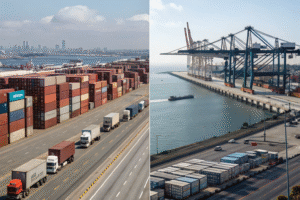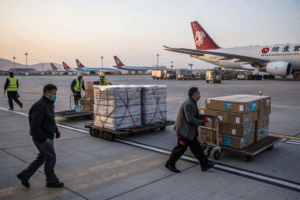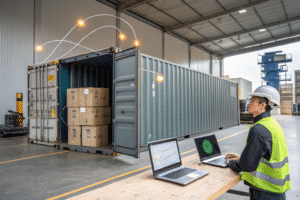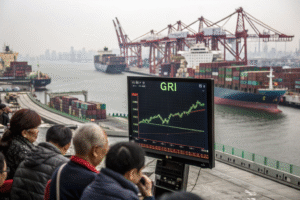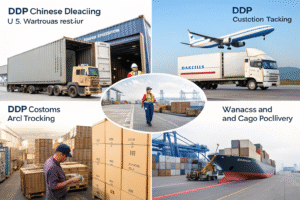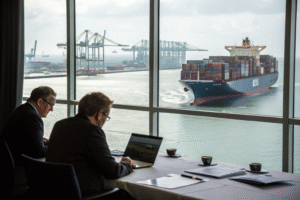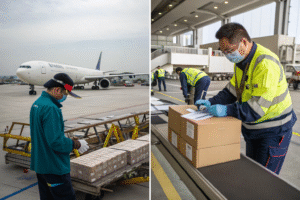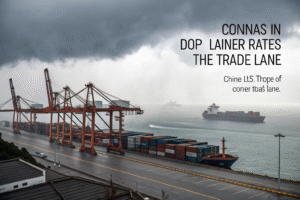Shipping internationally isn’t just about moving products — it’s about moving profits. Choose the wrong freight method, and your margin shrinks before the goods even arrive.
Sea freight is significantly cheaper than air freight for large, heavy, or non-urgent shipments. It offers the lowest cost per unit, especially when shipping full containers.
If you want to stay competitive and protect your bottom line, understanding the real cost difference between sea and air freight is essential. Let’s break it down.
Cost breakdown: sea freight vs. air freight
The biggest question for most importers is price. How much will it cost to move your cargo — and what are you really paying for?
Sea freight costs are based on container volume (CBM), while air freight is calculated by chargeable weight. Air is 5–10 times more expensive per kilogram.

Average freight costs (2025 estimates)
| Mode | Typical Cost | Cost Basis |
|---|---|---|
| Sea (FCL 40FT) | $3,200–$4,800 | Flat container rate |
| Sea (LCL) | $40–$70/CBM | Per cubic meter |
| Air | $4.5–$8.0/kg | Chargeable weight (actual or volumetric) |
Example comparison:
- 1 CBM, 200 kg:
- Sea (LCL): $60 × 1 = $60
- Air: $6 × 200 = $1,200
For low-value or bulky goods, sea wins by a wide margin.
At GeeseCargo, we always give our clients both sea and air options — so they can clearly see the price-performance trade-off before booking.
What's included in each quote?
| Cost Component | Sea Freight | Air Freight |
|---|---|---|
| Freight Charge | ✅ | ✅ |
| Fuel Surcharge | ✅ | ✅ |
| Terminal Fees | ✅ | ✅ |
| Handling Charges | ✅ | ✅ |
| Import Duties & Taxes | ❌ (unless DDP) | ❌ (unless DDP) |
DDP shipping with us includes all these charges, so there are no surprises at destination.
When is sea freight more cost-effective?
Cost isn’t the only factor. Timing, product value, and shipment volume all play a role. But if your delivery window allows it, sea is almost always the smarter financial choice.
Sea freight is more cost-effective for large volumes, heavy products, and non-urgent orders. It reduces your cost per unit, especially when fully utilizing container space.
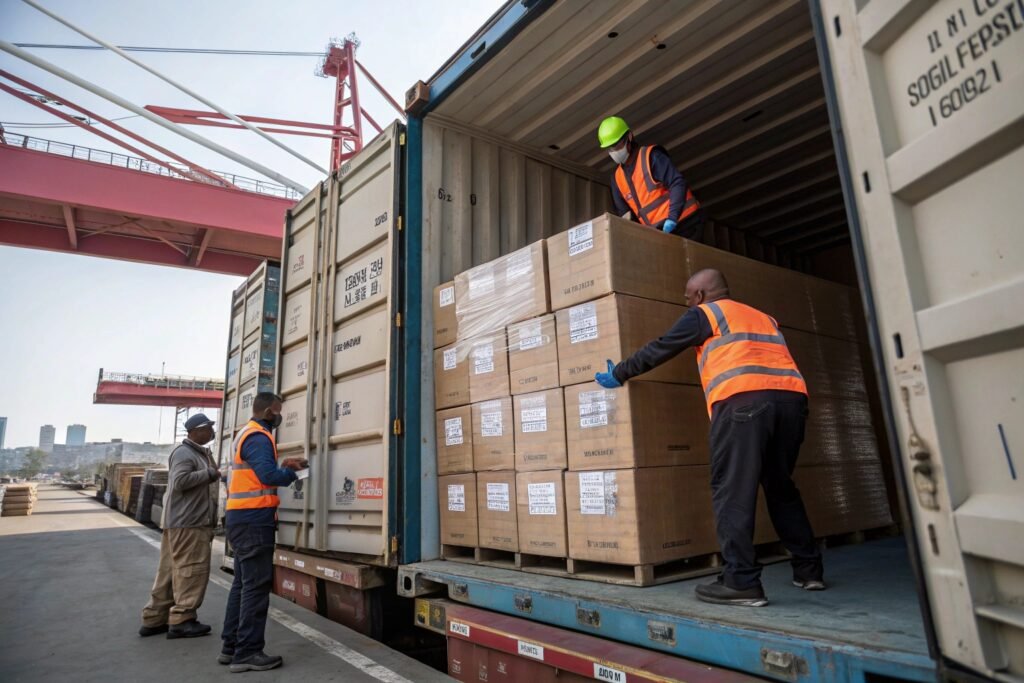
Ideal scenarios for sea freight:
| Situation | Why Sea is Better |
|---|---|
| Bulk orders (FCL) | Flat rate spreads over many units |
| Low-to-medium value goods | Protects margin |
| Predictable restock cycles | Time buffer allows slower transit |
| Heavy or dense items | Air costs spike with weight |
| Budget-sensitive sourcing | Maximizes shipping savings |
For example, one of our U.S. clients imports ceramic mugs from Fujian. Air freight would cost them more than the product itself. With sea, they save $6,000 per shipment.
What are the downsides of sea freight?
- Slower (typically 25–40 days to U.S. ports)
- Port congestion risk
- Less predictable during peak season
- May require warehouse planning to handle larger volumes
That’s why we help our clients balance their shipping modes: use sea for base inventory, and air for restocks or product launches.
Volume and weight impact on shipping cost
It’s not just what you ship — it’s how much space it takes up and how heavy it is. Sea and air calculate those numbers very differently.
Air freight is priced by the greater of actual weight or dimensional weight. Sea freight charges based on cubic meters, regardless of weight (up to the container’s limit).

Air Freight: How chargeable weight works
Formula:
L x W x H (cm) ÷ 6,000 = Volumetric weight (kg)
Example:
Carton size = 60 x 60 x 60 cm = 0.216 CBM
Actual weight = 30 kg
Volumetric weight = 60×60×60 ÷ 6,000 = 36 kg
Charge = $6 × 36 = $216
Sea Freight: Volume is king
- LCL is priced per CBM
- FCL is a flat rate per container (20FT, 40FT, 40HQ)
Heavy products like books, tools, or tiles often make more sense by sea — weight is less of a concern unless exceeding container limits.
| Item Type | Volume | Weight | Best Mode |
|---|---|---|---|
| Shoes (boxed) | Medium | Light | Sea (LCL or FCL) |
| Kitchen knives | Small | Heavy | Sea (FCL) |
| Phone accessories | Small | Light | Air (if urgent) |
| Gift boxes | Bulky | Light | Sea (LCL) |
At GeeseCargo, we analyze volume and weight for each quote. If air costs exceed 15–20% of product value, we recommend switching to sea.
How to calculate total shipping expenses
Freight cost is only part of the story. To make smart decisions, you need to calculate the landed cost — the full cost of getting your goods to your warehouse.
Total shipping expense includes freight, origin and destination handling, customs duties, inland delivery, and sometimes insurance.

What’s included in a full quote?
| Component | Description |
|---|---|
| Freight Charge | Sea or air base cost |
| Origin Charges | Pickup, export clearance, loading |
| Destination Charges | Unloading, DTHC, import clearance |
| Inland Delivery | Trucking to final location |
| Duties & Taxes | Based on HS code and cargo value |
| Insurance | Optional but recommended |
Sample sea freight (FCL) cost from Ningbo to LA:
- Ocean Freight: $3,600
- Origin Charges: $400
- U.S. Port Handling + Delivery: $800
- Import Duties (apparel): $320
- Total: $5,120
Now the same via air for 1,000 kg:
- Air Freight: $6,800
- Origin Charges: $250
- Delivery + Import: $950
- Duties: $320
- Total: $8,320
We prepare this breakdown for every GeeseCargo quote — line-by-line, so you know exactly what you're paying.
How to get accurate estimates?
- Know your CBM and weight
- Provide full product descriptions
- Share your delivery zip code
- Choose shipping term (FOB, DDP, etc.)
We also provide landed cost per unit, which helps you set pricing, forecast profit, and manage cash flow better.
Conclusion
Sea freight is the cheaper and more scalable option for most international shipments. It’s slower, but if planned well — with help from a trusted forwarder like GeeseCargo — it offers the lowest total shipping cost and protects your margins at scale.

